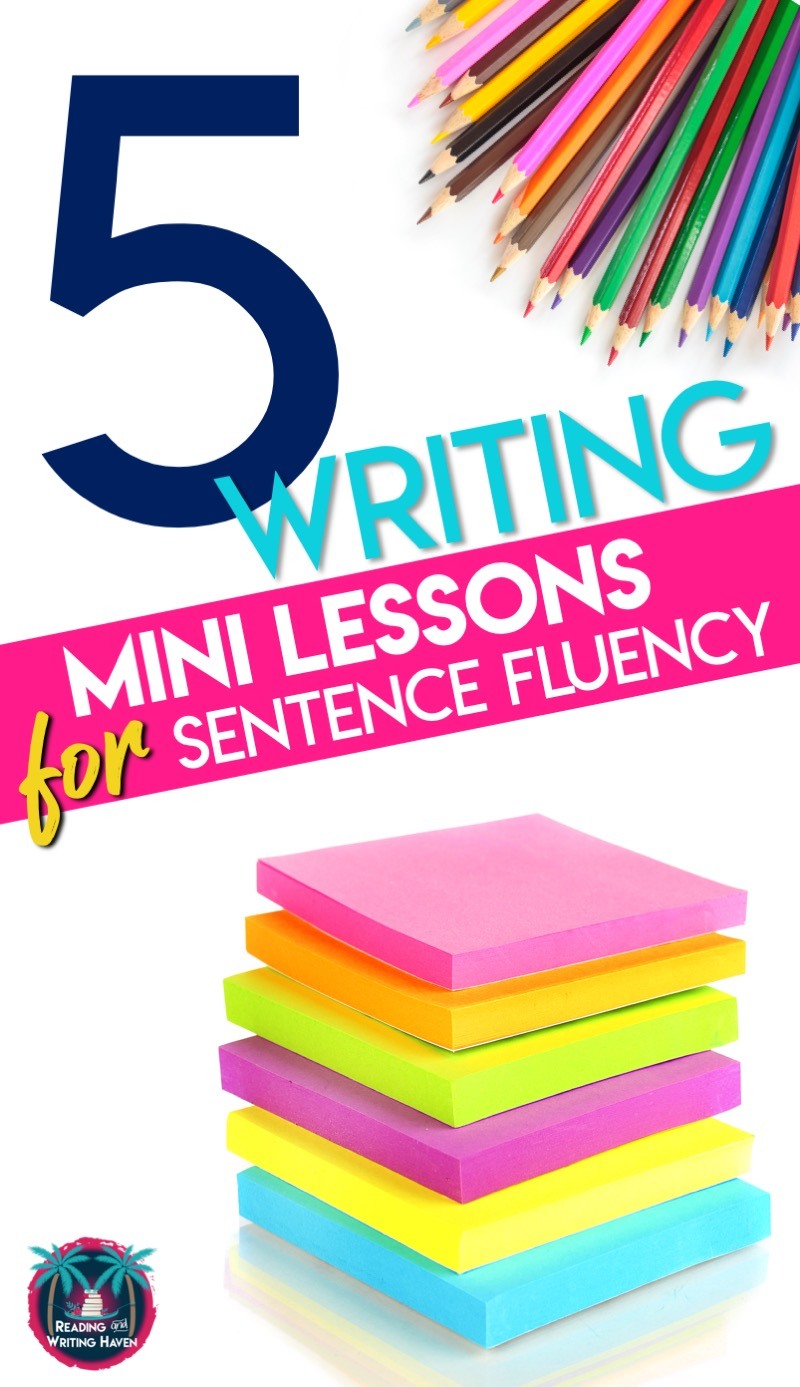Sentence Fluency Mini Lessons for Secondary Writing
When I think about student writing, one of the most difficult concepts to teach is sentence fluency. Much of excelling at fluent writing revolves around students’ background with literacy. Certainly, providing middle and high school students with many opportunities to hear eloquent reading and to engage in writing with meaningful feedback are two of the best ways to develop fluency. However, direct instruction is also important. In this post, you’ll find five sentence fluency mini lessons to use in secondary classrooms.
SENTENCE FLUENCY MINI LESSONS
WRITING PROCESS
Introducing and reviewing the writing process can help with sentence fluency because it de-emphasizes “one and done.” Teens tend to finish a rough draft and not want to look at it again. Of course, this causes problems with sentence fluency because students aren’t going through the revision and editing process. I have always found it helpful to teach the writing process and then to reinforcing it throughout the unit.
CONJUNCTIONS
When students don’t have a firm understanding of conjunctions, they tend to have more frequent run-ons and fragments in their writing. I teach a coordinating conjunction mini lesson when we are reviewing compound sentences. Subordinating conjunctions fit well with complex sentences. Conjunctive adverb mini lessons are helpful when teaching both compound and compound-complex sentences. When introducing and reviewing all of the conjunctions, I always focus on how they can enhance sentence fluency in students’ writing.
SENTENCE BUILDING
Looking for a way to model how students can build grammar concepts into writing? Sentence building mini lessons can be a fun approach. Once students have learned a few different grammar concepts (like subjects, predicates, prepositional phrases, appositives) you can show them how to add each element to a basic sentence. As students learn how to add more grammar concepts to a simple sentence, they will have a deeper understanding of sentence fluency. Tip: Ask students to use highlighters or pens to color code each grammatical element.
SENTENCE STRUCTURE
It’s nearly impossible for students to excel at fluid sentence fluency when they don’t understand the options available to them as a writer. I enjoy explicitly teaching simple, compound, complex, and compound-complex mini lessons. The best part is when students begin recognizing the structures in their reading and understanding how to use these sentence types in their own writing. It’s important that we provide opportunities to do so.
One of the most memorable writing assignments from my high school experience was when one of my English teachers asked me to write a four-sentence paragraph. Each sentence needed to be a different sentence type, and I had to color code them. Four sentences…sounded simple, but it wasn’t. I had to think critically, and when I was done, I had a visual picture of how I had strategically built in fluency.
COMMAS
Commas are a deal breaker with sentence fluency. When students aren’t using them, it’s generally not because they haven’t been taught. By junior high and high school, students often just need a review. I teach a one-day mini lesson on key comma rules. After, we practice applying those rules in writing. As students are writing an essay, if I notice they are making a common error (like using a comma before because or omitting the Oxford Comma – yes, I’m an advocate!), we do a five-minute whole-class refresher, and I create an anchor chart so they will have a visual reminder.
When students are struggling with sentence fluency, it helps to incorporate regular mini lessons. Figure out the trigger points that are causing the most issues, and spend some time teaching students the concept (make sure to model your thinking aloud!), finding examples in literature you are reading, and applying the skills to their own compositions.
